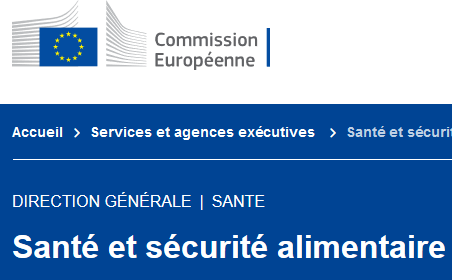Document type : audit report for the European Health DG
Authors: Health DG
The purpose of the audit was to determine whether the authorities responsible for animal welfare on farms have a strategic approach to the implementation of EU requirements, whether checks comply with the principles of 'quality control' and whether animal welfare indicators are used to measure the severity, extent and duration of animal welfare problems.
The report describes the outcome of an audit in Germany from 14 to 18 October 2019. The objective of the audit was to determine whether the authorities responsible for animal welfareon farms have a strategic approach to enforcement of European Union requirements, whether controls follow "quality management" principles and whether animal welfareindicators are used to measure the severity, extent and permanence of animal welfare problems. The report concludes that the competent authorities' approach to the setting of objectives and the planning and reporting of official controls is mainly operational "business as usual" with no targets, indicators or measurement of progress, nor any prioritisation of controls or allocation of resources and as such is insufficient to bring measureable change.the omission of the Action Plan on tail docking of pigs from the MANCP and the Handbookillustrates the need to reinforce the planning, execution and reporting of official controls to include important objectives that should be implemented according to established principles of quality management systems i.In contrast to the above, planning of cross compliance controls is well formulated on a demonstrable risk profiling (including severity, recurrence etc.) basis using a wide range of risk indicators that effectively target official resources to inspecting the potentially worst offenders in order to meet the objective of safeguarding European Community funds. Procedures for inspections are generally comprehensive but the omission of instructions on the Action Plan on tail docking of pigs (an intact tail is an important welfare indicator)means that no progress in this area is being made yet as no effective controls to implement the plan are being carried out. The assessment of non-compliances detected during cross-compliance controls gives a clearer picture of animal welfare problems as conclusions are reached on the severity,extent, permanence and recurrence. This methodology could be usefully extended or utilised for the planning and performance of other animal welfare controls. The Annual Report on implementation of the MANCP and the report on animal welfare required under Commission Decision 2006/778 give at best a superficial analysis of the results of official controls on animal welfare. Official control results are simply reported in terms of compliance/non-compliance.there is insufficient analysis on the results of controls to enable authorities at different levelsto have a clear picture of the animal welfare situation on farm and to assist them in developing strategies to address the major issues. The introduction of a national footpad scoring system for official controls on broilers and in private quality assurance schemes for both broilers and turkeys is a positive step using a widely accepted animal-based indicator. Although not required by EU legislation, it meets the criteria for a relevant, accepted, credible, easy to monitor, and robust indicator, whichhas already been shown to improve rearing standards. Research institutes concluded there are valid reasons for proposing the use of certain animal-based indicators for measuring the impact of rural development spending on animalwelfare. They also indicated that proven resource based measures do not always need to be backed up by animal welfare indicator outcomes in every case.The operators of private quality assurance schemes, which are based on measurable animal IIwelfare indicators and which work closely with each farmer on suboptimal issues, candemonstrate improvements in animal welfare over a period of years. Such schemes are currently outside official controls, but have clear potential to assist them. Competent authorities would benefit from taking these results into account as they could identify the risks and useful indicators for measuring animal welfare in the various sectors and whattrends and issues are emerging that may warrant their attention in the future planning and reporting of official controls.The report contains recommendations to the German authorities to address the shortcomings identified.






